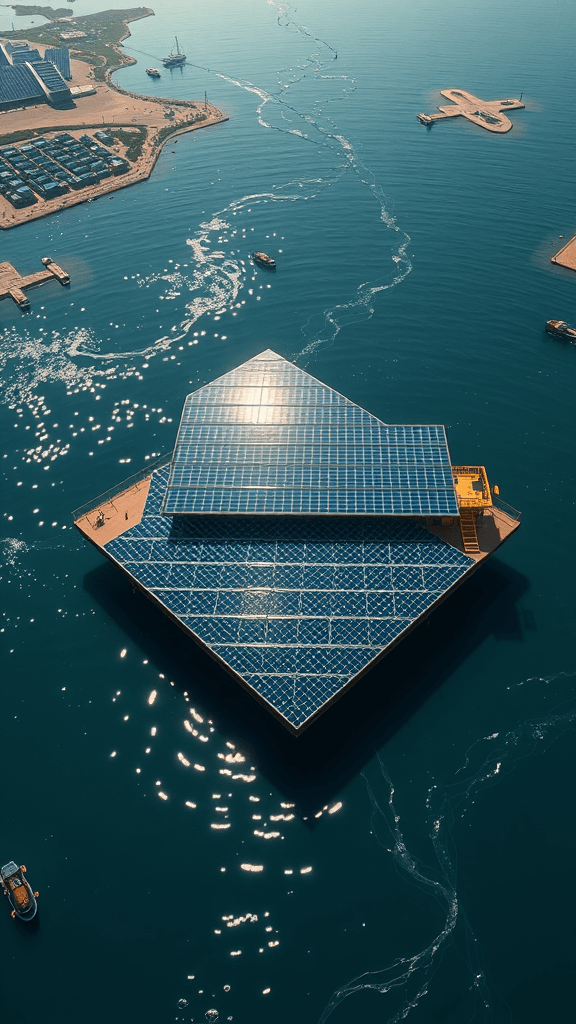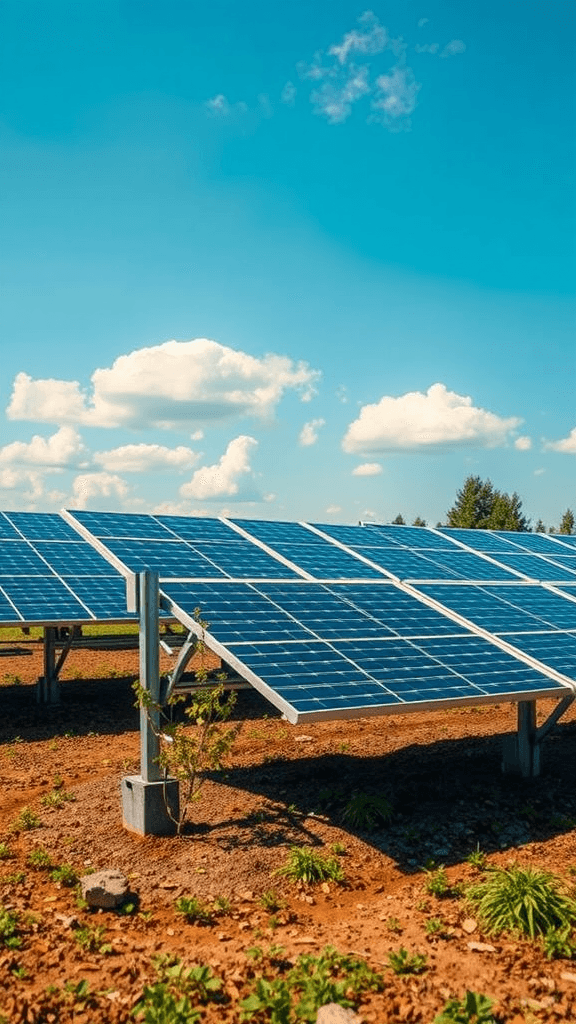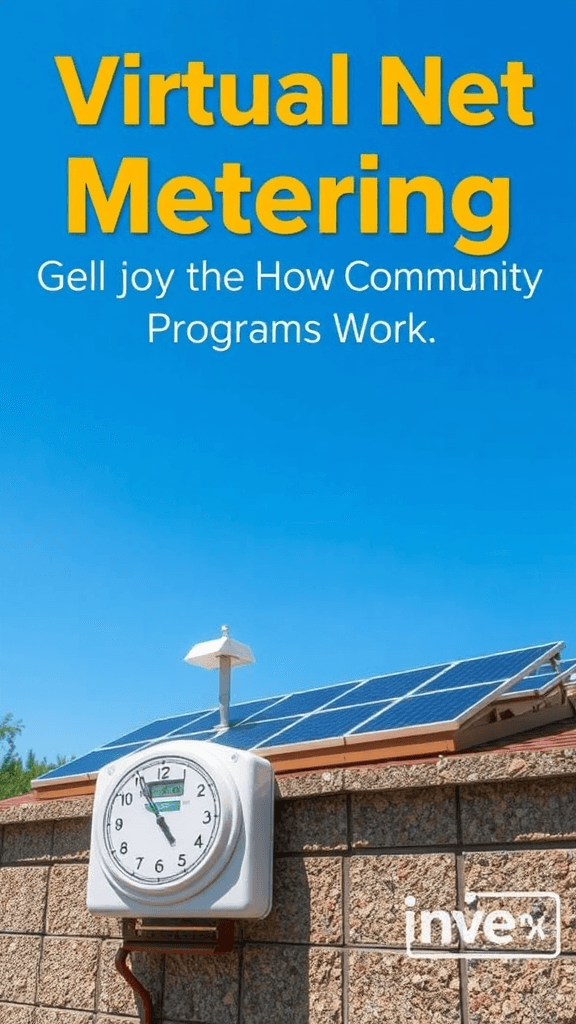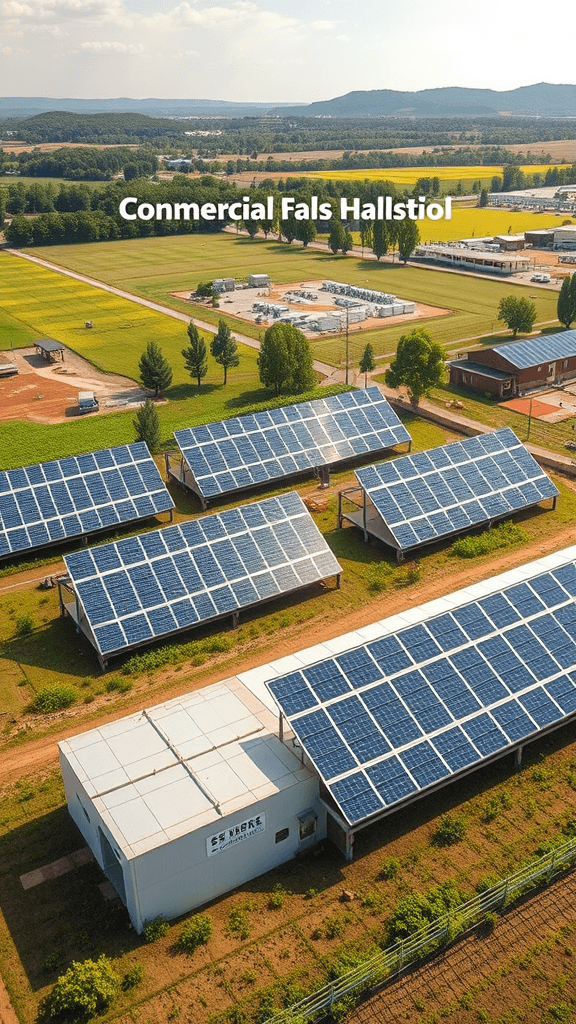Commercial Solar Carports: Dual-Purpose Installations
Exploring the Benefits of Commercial Solar Carports: Dual-Purpose Installations
Understanding Commercial Solar Carports
Commercial solar carports are innovative structures designed to serve two main functions simultaneously: providing shaded parking and generating clean, renewable energy. Unlike traditional solar panel installations that occupy roof spaces or open land, these carports combine utility and sustainability in one versatile system. By integrating solar arrays atop parking areas, businesses gain not only eco-friendly power but also protection for vehicles from sun, rain, and snow.
Maximizing Space Efficiency for Businesses
Many commercial properties face challenges related to space utilization. Flat roofs may have limited structural capacity for panels, and ground space might already be in use. Solar carports transform otherwise underutilized parking lots into productive energy hubs. This dual-purpose use contributes to more efficient land management, allowing businesses to capture solar energy without sacrificing critical real estate for daily operations or expansions.
Financial Advantages of Dual-Purpose Installations
Investing in commercial solar carports can significantly reduce operating costs over time. Here’s how:
- Energy Savings: Solar panels generate electricity that can be used onsite, reducing reliance on grid power and lowering utility bills.
- Incentives and Tax Benefits: Many governments offer tax credits, rebates, or grants to encourage renewable energy adoption, making solar carports more affordable upfront.
- Increased Property Value: Installing solar infrastructure often enhances the resale value of the property by making it more energy-resilient and future-proof.
- Maintenance Savings: Carports protect vehicles and the parking surface itself, thereby reducing wear and tear and associated repair costs.
Environmental Impact and Corporate Responsibility
Businesses are under increasing pressure to adopt environmentally responsible practices. Commercial solar carports provide a visible and effective way to demonstrate commitment to sustainability. By generating clean energy onsite, companies help lower greenhouse gas emissions and reduce their carbon footprint.
Moreover, these installations contribute to community efforts against climate change. Unlike traditional power sources that often rely on fossil fuels, solar energy is abundant, renewable, and produces zero emissions during operation. This appeals to eco-conscious customers and investors alike.
Enhanced User Experience at the Parking Lot
Beyond energy generation, solar carports directly improve the customer and employee experience. Shaded parking spaces offer relief from extreme weather conditions, protecting vehicles from damage caused by UV rays, hail, or ice buildup. This added comfort can enhance customer satisfaction and workplace morale, reflecting positively on the company’s brand.
Safety and Modern Features
Commercial solar carports can be equipped with additional functionalities to increase site safety and convenience:
- LED Lighting: Integrated solar-powered lighting improves visibility and security during evening hours.
- Electric Vehicle Charging Stations: EV chargers supports the growing number of electric vehicle users and promotes clean transportation.
- Smart Technology Integration: Sensors and monitoring systems help optimize energy usage and facilitate maintenance planning.
Design Flexibility to Suit Various Business Needs
One of the key benefits of commercial solar carports is their adaptability. They can be custom-designed to fit different lot sizes, architectural styles, and energy goals. Whether a company has a small retail lot or a large industrial parking facility, solar carports can be scaled and tailored to maximize solar exposure and meet power demands effectively.
Additionally, these structures can be designed for durability and aesthetic appeal. Materials such as steel or aluminum provide strong support for solar panels while maintaining a sleek, modern look that complements commercial spaces.
Streamlined Installation and Long-Term Reliability
Because carports utilize existing parking areas, installation processes tend to be less disruptive compared to ground-mounted solar arrays that require clearing land. Most solar carport projects can be completed within weeks, minimizing interference with daily business operations.
After installation, solar carports offer dependable performance with minimal upkeep. Periodic cleaning and inspections ensure panels maintain efficiency, and many manufacturers provide warranties guaranteeing power output for 25 years or more.
Driving Energy Independence and Resilience
Solar carports empower businesses to gain greater control over their energy supply. Producing power onsite reduces vulnerability to grid outages and fluctuating energy prices. For companies seeking sustainability certifications or aiming to boost resilience in emergency situations, these installations present a strategic advantage.
Embracing commercial solar carports is an intelligent way to forward both environmental and economic goals, creating lasting value for businesses while contributing to a cleaner, greener future.
Designing and Installing Commercial Solar Carports for Maximum Efficiency and Savings
Optimizing Placement for Commercial Solar Carports
When designing commercial solar carports, one of the most critical factors is deciding where to place them to capture the most sunlight throughout the day. Maximizing solar energy generation begins with understanding the sun’s path relative to the installation site. South-facing orientation is typically ideal in the northern hemisphere, ensuring panels receive direct sunlight from morning to evening.
Additionally, it’s important to avoid shading from nearby buildings, trees, or other infrastructure. Even partial shading can drastically reduce the efficiency of solar panels, cutting energy production and affecting your overall return on investment.
Choosing the Right Materials and Structure
Commercial solar carports need to be sturdy enough to withstand local weather conditions while supporting the weight of the solar panels. Materials such as galvanized steel or aluminum are commonly used because of their durability and resistance to corrosion. Steel structures tend to be cost-effective and strong, making them suitable for larger installations.
The design should also allow for adequate ventilation below the panels to prevent heat buildup, which can lower panel efficiency. By incorporating an open design, air can circulate freely, helping panels operate closer to their optimal temperature range and ensuring maximum energy output.
Electrical Design Considerations
Integrating solar panels into a carport structure requires detailed electrical planning. This includes the layout of solar panel strings, inverters, wiring routes, and connection points to your building’s electrical system or the utility grid. An efficient electrical design minimizes energy loss and ensures safety.
Using microinverters or power optimizers can enhance energy harvest, particularly in installations where shading or panel mismatches might occur. It’s also crucial to ensure all electrical components comply with local codes and regulations to avoid costly adjustments or penalties.
Maximizing Financial Savings through Incentives
Financial savings from commercial solar carports come not only from reducing electricity bills but also from leveraging various government incentives. Many regions offer tax credits, rebates, or grants that significantly lower upfront installation costs. For example, the federal Investment Tax Credit (ITC) in the U.S. offers a substantial percentage off your project cost.
Additionally, some states have performance-based incentives (PBIs), paying you based on the actual energy your solar system produces. Understanding and applying these financial benefits can improve your project’s payback period and overall savings.
Integrating Dual-Use Functionality for Added Value
One of the biggest advantages of commercial solar carports is their dual-purpose design: providing shade and protection for vehicles while generating clean energy. This dual functionality adds tangible value to your commercial property. Employees and customers benefit from shaded parking spots that help keep vehicles cooler, improving comfort and vehicle longevity.
In regions with high sun exposure, shaded parking can significantly reduce internal car temperatures, which is a key selling point for businesses looking to enhance their customer and staff experience. The combined benefits help justify investment in solar carports, making them more attractive than ground-mounted or rooftop solar panels alone.
Maintenance and Longevity for Long-Term Efficiency
To keep your solar carport running efficiently for decades, regular maintenance is essential. This includes cleaning the solar panels to remove dust, dirt, and bird droppings that block sunlight. Depending on the location, cleaning schedules can range from a few times a year to more frequent visits in dusty or polluted areas.
Structural inspections should be conducted to check for corrosion, loose bolts, or damage from storms. Preventative maintenance reduces unexpected downtime and keeps energy production stable, ensuring that the savings projected during installation persist throughout the life of the system.
Scalability and Future-Proofing Your Installation
Designing your commercial solar carport with future scalability in mind helps build a sustainable energy strategy. As your business grows, you may want to expand your solar capacity or integrate energy storage solutions such as batteries. Choosing modular system components allows for easier upgrades with minimal disruption.
Additionally, incorporating smart monitoring technologies enables real-time tracking of energy production and system performance. This insight helps you optimize usage patterns and detect issues early, maximizing your commercial solar carport’s efficiency and return on investment.
Partnering with Experienced Installers
Successful implementation of commercial solar carports depends greatly on working with experienced professionals who understand both solar technology and construction requirements. Skilled installers can provide insights into the best design choices for your specific site, handle permits, and ensure compliance with all regulations.
Investing time in selecting the right installation partner can save time and money while improving system performance. Many experienced installers will also assist with navigating incentives and financing options, making the process smoother from start to finish.
Benefits Beyond Energy Savings
Commercial solar carports contribute positively to your company’s environmental responsibility profile. Installing visible solar infrastructure publicly demonstrates a commitment to sustainability, which can enhance your brand image and attract eco-conscious customers and employees.
By mitigating carbon emissions and lowering utility costs, these systems foster long-term savings and environmental benefits, making them a smart investment for forward-thinking businesses.
Conclusion
Commercial solar carports represent a smart and innovative solution that blends functionality with sustainability. By providing shaded parking while generating clean energy, these dual-purpose installations offer businesses a unique way to reduce energy costs and carbon footprints simultaneously. Beyond energy savings, they enhance property value, improve customer and employee experience by keeping vehicles protected, and contribute to a greener environment.
When designed and installed correctly, commercial solar carports maximize efficiency and deliver impressive returns on investment. Thoughtful planning ensures optimal panel placement to capture the most sunlight throughout the day, while sturdy, weather-resistant structures guarantee long-term durability. Integrating the latest solar technology and considering site-specific factors can help businesses unlock the full benefits of their solar carport systems.
For organizations looking to lower energy expenses and demonstrate a commitment to sustainability, commercial solar carports serve as a practical and visually appealing option. They allow you to make the most of unused parking spaces, turning them into powerful assets that generate renewable energy. By investing in well-designed installations, you not only save money but also contribute to a cleaner future—making these solar carports a win-win for your business and the planet.






























